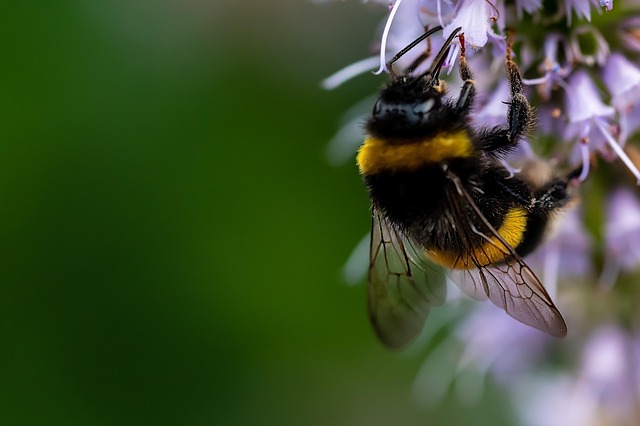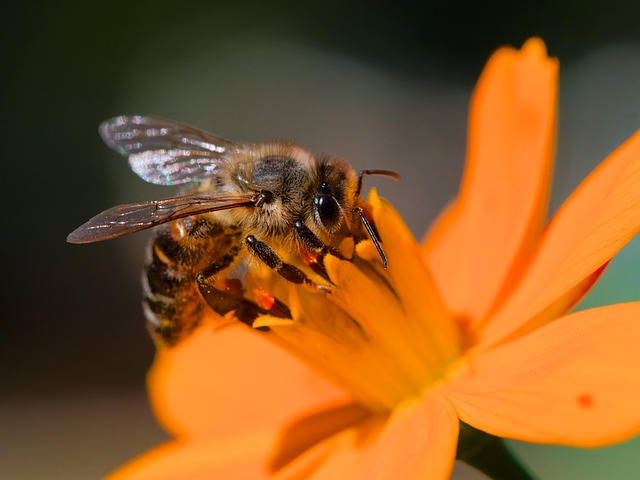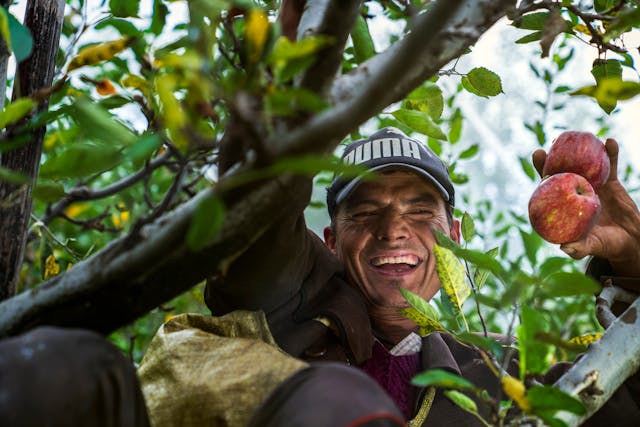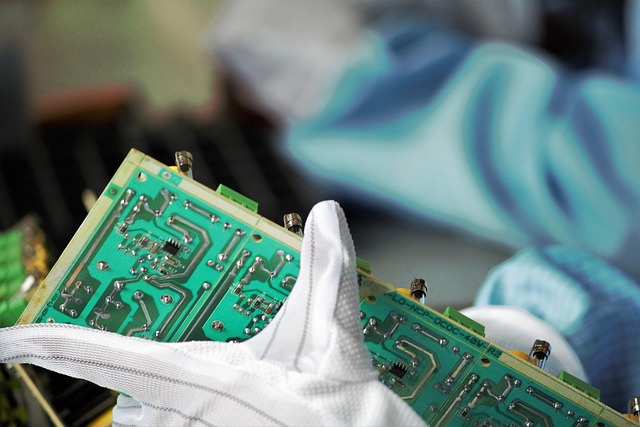Every grower knows that orchard success takes more than hard work. Weather, timing, and farm tools all matter. But pollination is one of the biggest factors. It decides fruit set, crop size, and fruit quality. Yet pollination is hard to predict. Even small changes in weather can hurt yields. This is where pollen services help. They give growers more control, support natural pollination, and keep results steady.
Bee activity can be disrupted by cold or wet weather, flowering windows don’t always align perfectly, and natural conditions rarely guarantee even fruit set. According to the UN’s Food and Agriculture Organization (FAO), more than 75% of food crops rely to some extent on pollinators, making any uncertainty here a major risk for growers.
Pollen services — the practice of supplementing natural pollination with targeted pollen applications — are emerging as a reliable solution. They reduce unpredictability, improve yields, and ultimately strengthen orchard economics. Here’s why orchardists worldwide are incorporating them into their strategies.
- Reduces Reliance on Insect Pollinators Alone

While bees remain indispensable partners in agriculture, relying solely on them is risky. Weather extremes can ground pollinators during peak bloom, and bee populations themselves face global stressors: the USDA reports that beekeepers in the U.S. lost nearly 48% of their colonies in 2022–23 due to disease, pesticides, and habitat loss.
Pollen services provide an insurance layer. In New Zealand kiwifruit orchards, commercial pollen application has shown yield gains of 10–20% in poor pollination years. By ensuring flowers receive adequate pollen regardless of insect activity, growers reduce vulnerability and achieve more reliable fruit set. That’s why many have turned to pollen services NZ growers vouch for as a reliable complement to natural pollination.
- Ensures Consistent Yields Across the Orchard
Even in years of good bee activity, orchards often experience uneven fruit set. Blossoms in cooler or shaded blocks may set poorly, creating harvest variability. Supplemental pollen ensures fertilization occurs uniformly, helping balance yields across rows and sections.
This consistency translates into practical benefits:
- Better forecasting for contracts and buyers.
- Reduced risk of shortages that can damage buyer relationships.
- Improved labor efficiency at harvest because fruit maturity is more synchronized.
For example, apple growers in Washington State who integrated mechanical pollen spraying reported up to 15% improvement in harvest uniformity, reducing costly late-pick passes.

- Enhances Pollination for Specific Varieties
Certain crops demand precise pollination. Kiwifruit requires cross-pollination between male and female vines, while almonds depend on compatible pollen donors. Inadequate transfer can lead to undersized fruit or low market grade.
Pollen services allow for variety-specific targeting. By isolating and applying high-quality pollen from selected donor cultivars, orchardists can maximize fruit set in demanding varieties. In Chilean cherry orchards, controlled pollen applications improved fruit size uniformity and reduced rejects, opening access to premium export markets.
- Improves Fruit Quality and Marketability
Pollination doesn’t just influence quantity — it shapes quality. Well-pollinated flowers produce larger, better-shaped, and more uniform fruit. This matters because market premiums often depend on size categories.
A 2020 study in Acta Horticulturae found that kiwifruit receiving optimal pollen loads weighed 20–25% more on average compared to under-pollinated fruit. Supplemental services reduce the risk of deformed or uneven fruit, boosting pack-out rates and minimizing waste during grading and storage.
For growers, that translates into higher returns per hectare and stronger brand reputation with packhouses and exporters.
- Optimizes Use of Orchard Resources
Uneven pollination often forces growers into corrective thinning, staggered harvests, and irregular packhouse runs. By contrast, consistent fruit set streamlines operations:
- Thinning costs drop because fewer clusters need manual adjustment.
- Packing efficiency improves when fruit is uniform in size and ripening.
- Storage logistics benefit from predictable volumes and quality.
Kiwifruit packhouses in New Zealand report that blocks treated with pollen services produce more consistent trays, reducing sorting bottlenecks and improving export efficiency.
- Increases Revenue and Market Access
Ultimately, the economics are compelling. By maximizing the proportion of flowers that develop into market-ready fruit, pollen services deliver measurable financial returns.
- In New Zealand, Zespri-aligned kiwifruit growers estimate pollen services can generate ROI of 3–5x the application cost in improved yield and quality.
- U.S. almond growers using supplemental pollen sprays have reported per-acre gains worth hundreds of dollars in seasons with weak bee activity.
More fruit, better quality, and reliable consistency also open doors to premium markets that demand strict grading standards.
Global Perspective: Beyond New Zealand
While kiwifruit in New Zealand is a flagship example, pollen services are gaining traction worldwide:
- Apples and pears in Europe and North America use precision pollen spraying to address early bloom variability.
- Almonds in California, where bee rental costs can exceed $200 per hive, increasingly supplement with pollen sprays to hedge against poor weather.
- Cherries in Chile rely on pollen services to improve packhouse efficiency for export to Asia.
This global adoption underscores pollen services as a mainstream, not niche, tool.
Environmental & Sustainability Benefits
Beyond economics, pollen services can contribute to environmental resilience. By reducing over-reliance on stressed bee populations, they help ease pressure on commercial hives. They also improve orchard efficiency, which can lower input waste and carbon intensity per kg of fruit produced.
When combined with integrated pest management and precision ag tools, pollen services support orchards in aligning with sustainability certifications and global supply-chain demands.
FAQs About Pollen Services
Q1: How do pollen services actually work?
Specialized pollen is collected, stored, and applied through sprayers, blowers, or drones. The process delivers viable pollen grains directly to receptive flowers during bloom.
Q2: Are pollen services cost-effective compared to renting hives?
Yes — they’re often used in addition to hives. Hive rental provides pollinators, while pollen services ensure coverage even when bee activity is low. ROI studies in kiwifruit and almonds show returns far exceeding application costs.
Q3: Which crops benefit most?
Kiwifruit, apples, pears, almonds, and cherries are leading examples, but any crop requiring cross-pollination can see benefits.
Q4: Do pollen services replace bees?
No. They complement insect pollination, stabilizing outcomes when natural conditions underperform.
Final Thoughts
Pollination may be unpredictable, but your yields don’t have to be. By integrating pollen services, growers take an active role in ensuring consistent fruit set, higher quality, and better financial outcomes. Backed by data from orchards worldwide, these services are proving to be more than an insurance policy — they’re a long-term yield optimization strategy that modern orchards can’t afford to ignore.




